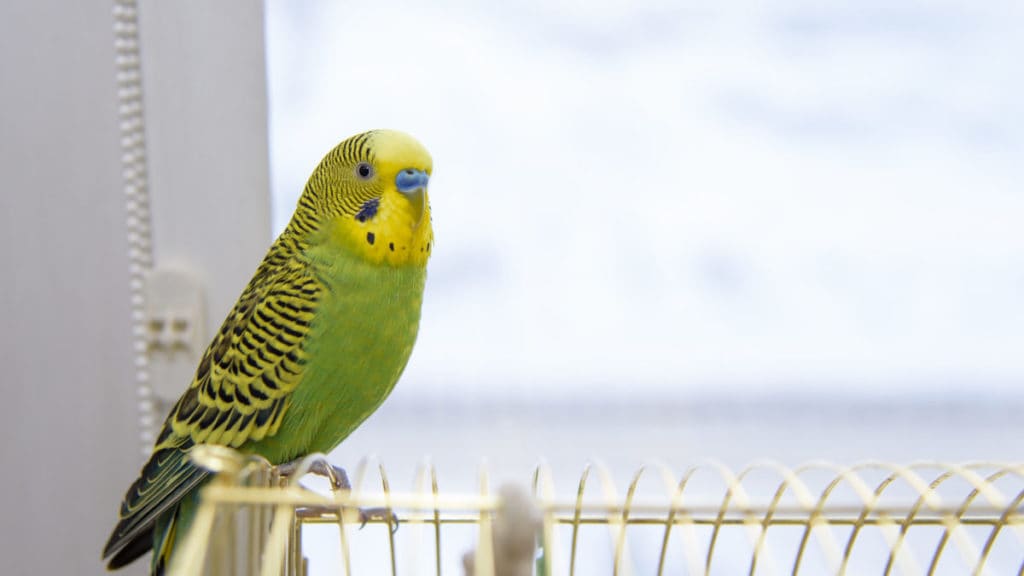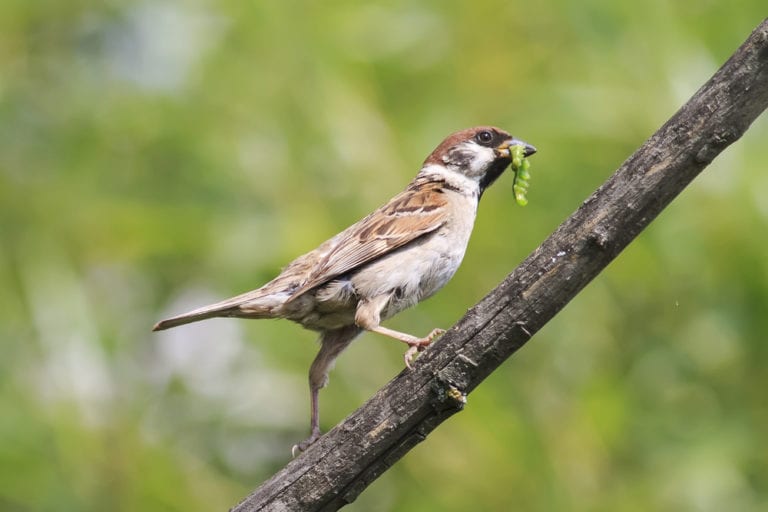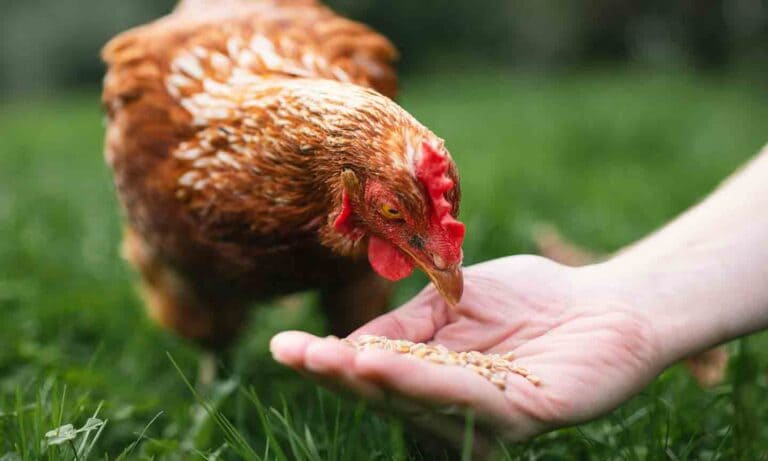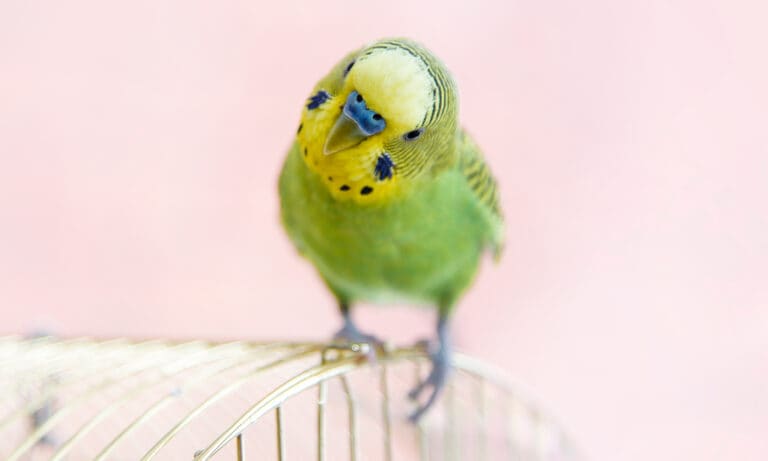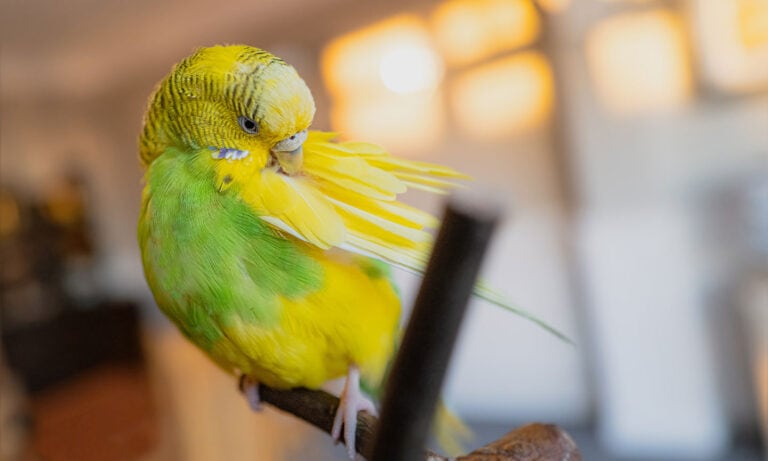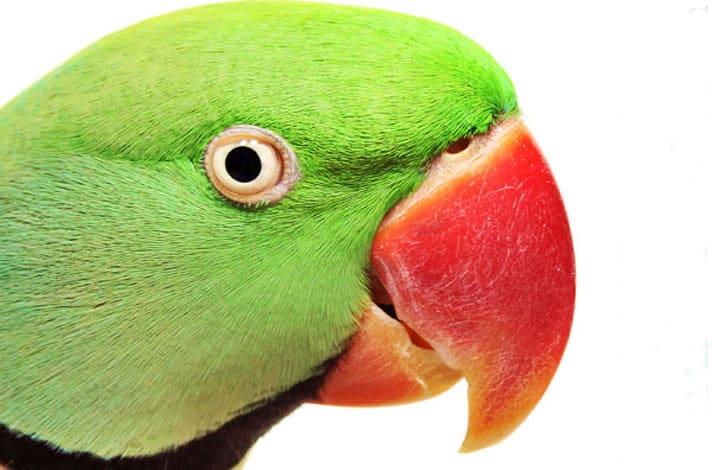Bird owners wonder how to safely heat the home with pet birds in the vicinity. Others want to know how to keep their tropical pets warm without heating the entire house to 80 degrees in the dead of winter. There are solutions to both problems.
Keep Birds Warm with a Bird-Safe Heating Lamp
Farmers first used heat lamps in the poultry industry to keep chicks warm. Eventually exotic bird breeders began using lamps to provide emergency heat for their birds and to keep brooders warm for baby birds.
Although a table lamp might provide a bit of extra emergency heat, the heat dissipates when the light is turned off, and it can’t be used at night when temperatures drop to their lowest point.
MORE: Ideal Temperature Ranges For Parrots
Instead, purchase only bird-safe heat lamps from sources that market them specifically for avian use. Some bulbs on the market are coated with a substance containing PTFE (polytetrafluoroethylene), the same polymer in nonstick cookware that can emit toxic fumes when overheated. Incandescent or infrared incandescent bulbs are frequently used for heat lamps. The infrared bulb warms objects rather than the surrounding air and does not disturb the avian sleep cycle, because of the unique red light.
Ceramic heating elements also do not disturb the normal day/night cycle, because they do not emit light. The Pearlco brand infrared heat emitter was designed specifically for use with animals and is available in 30-, 60-, 100-, 150- and 250-watt output. The ceramic will not shatter if spattered by water, but it does get very hot and must be located out of the birds’ reach. Avi-Tech Exotic Birds (www.avitec.com) markets Pearlco heating elements and a clamp-on reflector/lamp holder to hold the heating device, as well as a plug-in dimmer control for power adjustment.
Cages By Design also carries a ceramic infrared heat emitter that is marketed for bird-safe winter or supplemental heat (www.cagesbydesign.com).
If you’re looking for bird-safe winter heat that will keep your pet bird warm but not cause your heating bill to skyrocket, you might try Cozy Products Flat Panel chicken coop heater.
Safety Tips
Keep birds and other animals away from cords, switches, heating elements, bulbs and lighting tubes, as electrocution or injury may result from such contact. Hot light bulbs may shatter if spattered by water. Locate hot or incandescent bulbs out of your bird’s splash zone. Supplementary lighting and heating products are safe and beneficial when used prudently and according to manufacturers’ instructions.
Watch the temperature of any ceramic heat elements that you use around your pet birds. If left on all day, such as during the winter, they can get very hot, so your bird should not have access to them or an accident could follow.
Using space heaters, gas fireplaces and other human-oriented winter heating devices can lead to tragedies with our pet birds. Some space heaters contain components coated with polymers containing polytetrafluroethylene (PTFE), the same element in nonstick cookware that (when overheated) emits fumes deadly to birds. Contact manufacturers for information about the specific item you’re interested in purchasing.
For more information, call the Consumer Product Safety Commission with questions about the safety of household appliances: 800-638-2772; Hearing impaired: 800-638-8270.
I do not recommend using fuel-burning space heaters (kerosene, etc.) in homes with birds, and electric heaters with exposed heating elements can be fire hazards.
I’ve used a radiator-style electric heater with no exposed heating elements with my birds for 20 years and experienced zero problems. Still, talk to the manufacturer about possible PTFE coatings before purchasing.
I also do not recommend “vent-free” fireplaces for bird rooms. These operate similar to a gas stove in that they do not have a vent to the outdoors but rather indoors.
Nor should your bird have access to a fireplace. If you like to occasionally run a fire during the winter, close the door to your bird room, so the fumes will not filter in to its air.
For extra safety, install a carbon monoxide and smoke detector in your home and be aware of the signs that a pet bird is overheating.
Signs of overheating:
- Panting
- Wings held away from the body
- Neck extended
Raise the Humidity
Cold isn’t the only winter threat to pet birds. During the winter, do you notice more dander emanating from your pet’s bird cage lately? Are there more feathers on the floor? Does your pet look dusty? Of course, if you have a cockatoo, cockatiel or African grey, you’re always going to see a certain amount of white powder, which they naturally emit, but if your conure’s or quaker’s feathers look a little dull or under the weather, low humidity might be to blame. With winter heat blasting, indoor air often becomes dry leading to dry nasal passages and cracked hands in humans. Imagine how your sensitive bird must feel!
Alleviate problems associated with low humidity in several ways:
- Regular showers and baths (use wet greens or a gentle mist for those that don’t like to bathe on their own)
- Run an air humidifier or vaporizer specifically designed for birds, such as the JWR Rain Forest germicidal warm mist air humidifier (www.aircleanersforbirds.com). Unfortunately, some standard cold-air electric humidifiers or vaporizers also increase the level of mold and dampness in a home, which does help the pet birds or humans present.
To naturally add moisture to the air, try slightly modifying your household routine.
- When pre-heating the oven, place a roasting pan filled with water inside the oven.
- Place damp towels or shallow pans of water on top of old-fashioned radiators.
- Place a tea kettle on top of a wood burning stove.
- Leave the bathroom door ajar while you take a shower.
- Regularly mist houseplants to keep the transpiration (the process whereby plants release moisture into the air) cycle going.
- Hang laundry to dry indoors instead of using the dryer.
Posted by: Chewy Editorial
Featured Image: Vyaseleva Elena/Shutterstock.com
Share:
